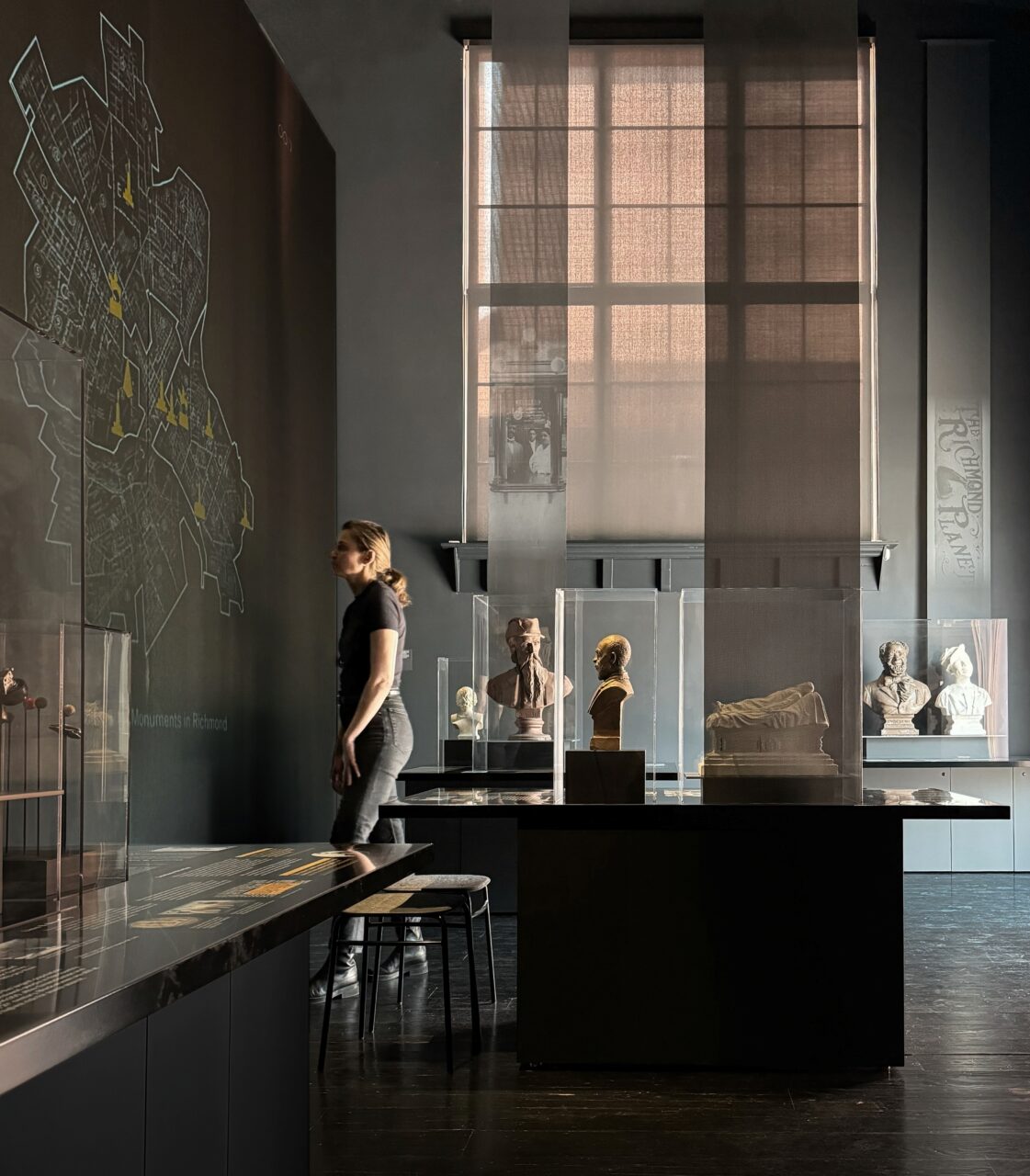Silver Winner of the International Architecture & Design Awards 2024
Architect / Designer:
Wendy E Joseph
Studio:
Studio Joseph
Design Team:
Wendy Evans Joseph, Principal
Monica Coghlan, Director of Design
Ruben Gomez, Designer
Wonwoo Park, Designer
Alexandra Adamski, Designer
Ksenia Dynkin, Content and media strategy
Brandon Studer, Graphic Design
Anthony Roy , Graphic Design
Contractor: Capitol Exhibit Services Inc
Chuck Schweider, Project Manager
Copyright:
Studio Joseph
Country:
United States
Sculpting History and the American Myth: Experiential Design for Inclusivity
Edward Valentine (1838-1930) created some of the most enduring public art of Confederate leaders. Within the walls of his studio, he sketched, molded, and cast art that would support the narrative of the Lost Cause.
The exhibition interrogates the museum’s history and responds to the contentious conversations around monuments. It reexamines the impact of the Lost Cause myth locally and nationally. In 2020, while Richmond’s Confederate monuments were coming down, the museum undertook an ambitious plan to reinterpret Edward Valentine’s sculpture studio to address these specific issues and the national conversation about America’s complicated history.
Community engagement was integral to making this project with input before and at multiple points during the design process. Designing through the lens of community amplified their voices and gave them agency. The ability to exhibit in the actual studio of Edward Valentine, the eminent Lost Cause sculptor, demonstrates how architectural space can affect meaningful storytelling.
The narrative embraces history via multiple perspectives, combining physical display and media-driven experience that is educational and highly emotional. The studio is 640sf. Its original wood floors, windows, fireplace, and balcony remain.
Tables: Each table (about 36″ x 72″) presents a theme or tactic of oppression, including education, politics, religion, money, and violence. The tables support back-lit graphics, embedded cases with artifacts, and vitrines with sculptures. Vertical scrims reach from the vitrines to the ceiling; they partially block the view of the images and are each printed with graphic representations.
Intro: There is wall text with images and interpretive text. The wall simplifies the studio volume, curving the corner by the balcony. The graphic imagery, fonts, and minimal use of color are part of a highly reductive yet bold presentation.
Media projection: A 15-minute film addresses employing monuments as propaganda. It includes the eventual dismantling of Monument Avenue in Richmond. We illuminate specific sculptures as they relate to the narrative at different times during the presentation. This way, we take the power away from these pieces and return it to the community.
Community Response: There is an area for visitors to write their feelings and share them with the museum and others. Many are on display and later also communicated on the museum’s website. Ongoing educational programs for the community help everyone to understand history.
Sculpture Shelf: We place 86 sculptures on seven shelves behind a black scrim. Reaching 16 feet high and stretching the 30-foot length of the studio, the monumental display is both provocation and canvas for narrative. With two modes of lighting—a continuous LED strip and mini spots—the media presentation is in sync with the illumination of specific pieces ending with a total reveal.
Studio Joseph
Studio Joseph is an architecture and experience design practice focused on transformative designs for cultural institutions of all scales. Our studio is home to a diverse group of thinkers and makers who believe in the power of place and form to create meaning. Our process spans from early conceptual planning to detailed oversight of a project’s execution, working holistically with like-minded partners. Our work marries a space’s pragmatic needs with a bold narrative gesture in service of meaningful and unique solutions.
What we build should be transformative and embrace integrated solutions beyond physical design, including content-driven, multisensory, and interactive experiences highly specific to place, program, and community.
Our approach to storytelling begins with listening to a range of voices — both from the past and present. We seek to understand motivations and convey them with clarity and honesty.


